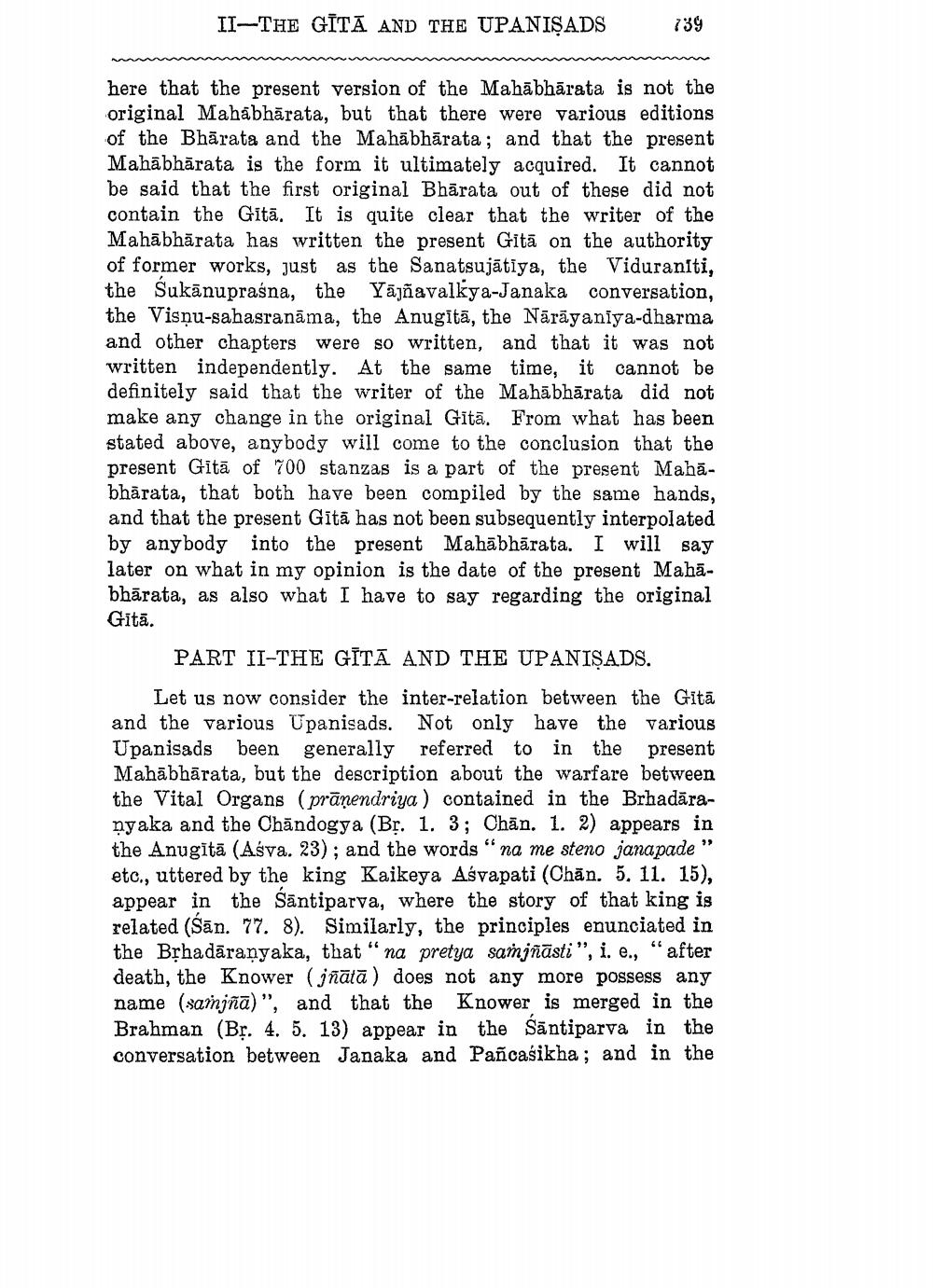________________
II-THE GITA AND THE UPANISADS
739
here that the present version of the Mahabharata is not the original Mahabharata, but that there were various editions of the Bharata and the Mahabharata; and that the present Mahabharata is the form it ultimately acquired. It cannot be said that the first original Bharata out of these did not contain the Gits. It is quite clear that the writer of the Mahabharata has written the present Gita on the authority of former works, just as the Sanatsujatiya, the Viduraniti, the Sukanupraśna, the Yajnavalkya-Janaka conversation, the Visņu-sahasranama, the Anugita, the Narayaniya-dharma and other chapters were so written, and that it was not written independently. At the same time, it cannot be definitely said that the writer of the Mahabharata did not make any change in the original Gita. From what has been stated above, anybody will come to the conclusion that the present Gita of 700 stanzas is a part of the present Mahabharata, that both have been compiled by the same hands, and that the present Gitä has not been subsequently interpolated by anybody into the present Mahabharata. I will say later on what in my opinion is the date of the present Mahābharata, as also what I have to say regarding the original Gită.
PART II-THE GITA AND THE UPANISADS.
Let us now consider the inter-relation between the Gita and the various Upanisads. Not only have the various Upanisads been generally referred to in the present Mahabharata, but the description about the warfare between the Vital Organs (pranendriya) contained in the Brhadaranyaka and the Chandogya (Br. 1. 3; Chan. 1. 2) appears in the Anugītā (Asva. 23); and the words "na me steno janapade etc., uttered by the king Kaikeya Aśvapati (Chan. 5. 11. 15), appear in the Santiparva, where the story of that king is related (San. 77. 8). Similarly, the principles enunciated in the Bṛhadaranyaka, that "na pretya samjñāsti", i. e., "after death, the Knower (jnäta) does not any more possess any name (samjña)", and that the Knower is merged in the Brahman (Br. 4. 5. 13) appear in the Santiparva in the conversation between Janaka and Paficaśikha; and in the




